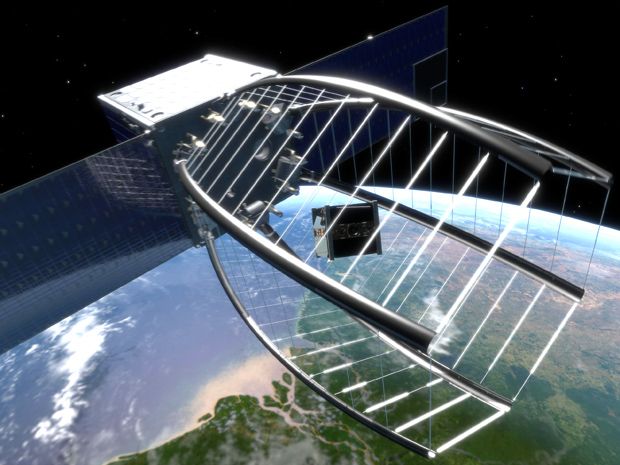Space Force’s International Partnerships in Commercial Space Industry
Article by Meredith Roaten February 25, 2021 (nationaldefensemagazine.org)
• At the Air Force Association’s Virtual Aerospace Warfare Symposium on February 25th, Space Force chief of operations, General John “Jay” Raymond, said that Space Force will prioritize collaboration with the commercial space industry and partners around the world. The commercial space industry has lowered the barriers to space, so that almost all Space Force missions can be commercially viable with smaller, more operationally relevant satellites, Raymond said. “We want to build a very fused connection with commercial industry.”
• In its first year, the Space Force transferred personnel and commissioned cadets to the service; published doctrine and set up monitoring systems to track space debris; fleshed out training and submitted recommendations to Congress about how to update the space acquisition process. “This second year is all about integration and integrating this force,” Raymond said. “It’s driving the car that we built.” Space Force is ready to move on to bolstering behavioral norms with international allies and launching more assets into space.
• Space Force’s structure allows it to work with industry to leverage technology innovation while saving money. Earlier this year, Space Force established ‘SpaceWERX’, a technology accelerator program that works with companies in the space industry. “As we design that force, we want to design it in a way that capitalizes on this new business model that has emerged, that produces satellites off of a production line, rather than the one-off, handmade wooden shoe that takes years and years and years to build,” Raymond said.
• International exercises and wargames have helped the service foster these norms in the past year. Strengthening norms of behavior for space operations alongside international partners will improve safety, Raymond said. Norms don’t prevent bad behavior but they draw attention to countries or companies operating in a dangerous way. “We’ve made some really good strides and we operate to demonstrate that good behavior,” said Raymond. “We want to build this coalition friendly from the beginning to allow our international partners to invest.”
• Meanwhile, Raymond noted that the “explosion” of the space industry and international space activity has created new problems in ‘space debris’ or ‘space junk’. There are thousands of pieces of debris in addition to the thousands of satellites in low-Earth orbit, creating the danger of collision. “If the space domain is something we all care about, then inventing some innovative way to get the debris out of space could be something very useful for the future,” Raymond said. Improving engineering and launch standards will help to prevent more debris buildup. International partners can also monitor space and warn each other about potentially dangerous debris.
 This year, the Space Force will prioritize collaboration with the commercial space industry and partners around the world, the
This year, the Space Force will prioritize collaboration with the commercial space industry and partners around the world, the

service’s chief of operations said Feb. 25.
These types of partnerships have and will continue to allow the United States to lead the world in space, Gen. John “Jay” Raymond said at the Air Force Association’s Virtual Aerospace Warfare Symposium. The service — the newest branch of the military — was stood up 14 months ago.
In its first year, the Space Force transferred personnel and commissioned cadets to the service. It also published doctrine and set up monitoring systems to track space debris, among other capabilities. The service also fleshed out training for its new personnel and submitted recommendations to Congress about how to update the space acquisition process.
“This second year is all about integration and integrating this force,” Raymond said. “It’s driving the car that we built.”
Now, the service is ready to move on to bolstering behavioral norms with international allies and launching more assets into space. Because the commercial industry has lowered the barriers to space, almost all Space Force missions can be commercially viable with smaller, more operationally relevant satellites, he said.

 “We want to build a very fused connection with commercial industry,” he said.
“We want to build a very fused connection with commercial industry,” he said.
The service’s structure should allow it to work with industry to leverage technology innovation while saving money, he noted.
“As we design that force, we want to design it in a way that capitalizes on this new business model that has emerged, that produces satellites off of a production line, rather than the one-off, handmade wooden shoe that takes years and years and years to build,” Raymond said.
Earlier this year, the service established SpaceWERX, a technology accelerator program that works with companies in the space industry. The technology areas of focus for the program will be announced in coming weeks.
The service will also grow partnerships with allies this year, Raymond noted. Strengthening norms of behavior for space operations alongside international partners will improve safety, he said.
FAIR USE NOTICE: This page contains copyrighted material the use of which has not been specifically authorized by the copyright owner. ExoNews.org distributes this material for the purpose of news reporting, educational research, comment and criticism, constituting Fair Use under 17 U.S.C § 107. Please contact the Editor at ExoNews with any copyright issue.


 price tag is steep, but this mission—involving an orbiting, mouth-like net—could herald the beginning of an entirely new space industry.
price tag is steep, but this mission—involving an orbiting, mouth-like net—could herald the beginning of an entirely new space industry.